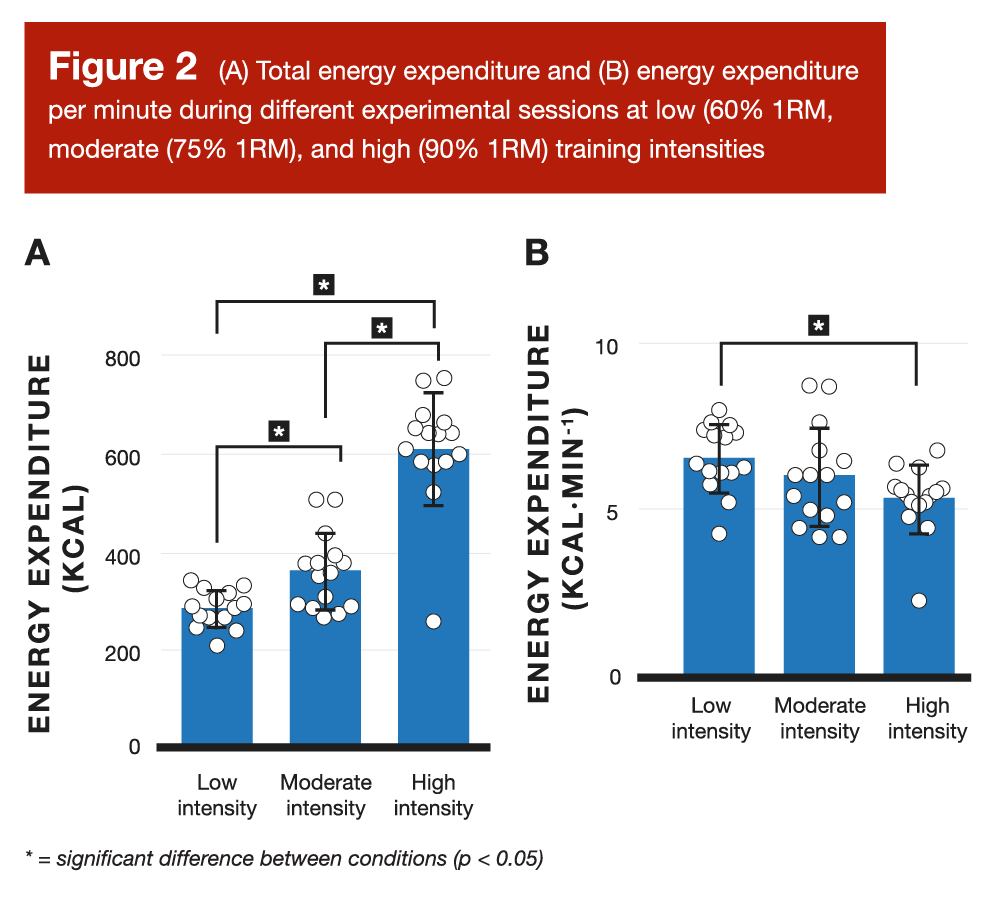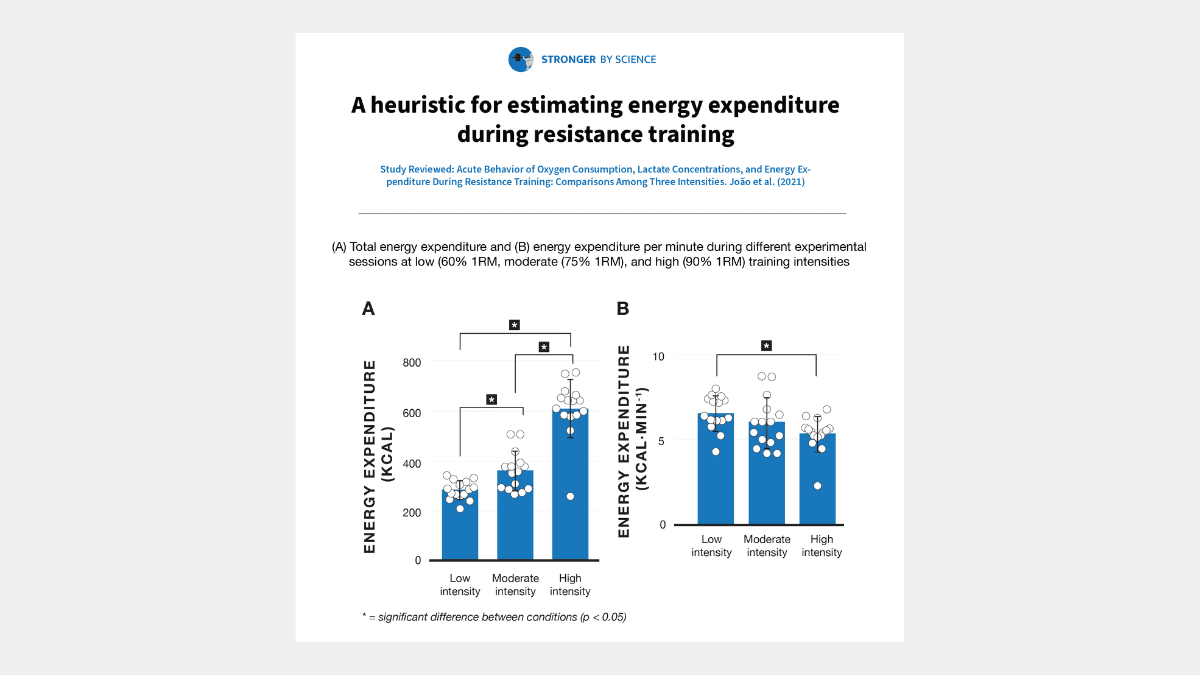Back in Volume 3, Issue 4 of MASS Research Review, I reviewed a study that examined the energy cost of resistance training (2). It was an informative study, but the data were presented in a way that made it challenging to provide many actionable takeaways. However, a recent study provides us with data that are a bit more useful for generating a ballpark estimate of the calories burned in a typical training session (1).
João and colleagues recruited 15 trained men for a crossover study investigating the impact of training intensity on energy expenditure during resistance training. After assessing 1RMs, the subjects performed three different sessions of eight exercises (chest press, pec deck, squat, pull-down, biceps curl, triceps extension, hamstrings curl, and machine crunch). The low-intensity session consisted of 2 sets of 15 reps of each exercise at 60% of 1RM, the moderate-intensity session involved 3 sets of 10 reps at 75% of 1RM, and the high-intensity session required 6 sets of 5 reps at 90% of 1RM (Figure 1). Subjects rested two minutes between sets. During each session, subjects wore a portable spirometer (to measure gas exchange) as a means to estimate energy expenditure.

Overall, energy expenditure was higher during the moderate-intensity session compared to the low-intensity session, and higher during the high-intensity session compared to the moderate-intensity session. That said, due to the number of sets performed in each condition, the high-intensity session was the longest and the low-intensity session was the shortest. So, when energy expenditure was expressed in terms of kilocalories per minute, it was actually slightly (though significantly; p < 0.05) greater in the low-intensity session than the high-intensity session (Figure 2). However, the average energy expenditure was approximately 6kcal/min in all three conditions, and the variability between subjects was reasonably low – almost all of the subjects burned between 4kcal/min and 8kcal/min in all conditions.

There aren’t any great generalized equations for estimating energy expenditure during resistance training. However, I think this study leaves us with a decent heuristic: total energy expenditure during resistance training is probably about 6kcal/min (including rest intervals). Of course this won’t be a completely accurate estimate in all circumstances. If two individuals with different strength levels perform identical workouts with the same relative intensity, energy expenditure will likely be greater in the stronger individual, since their training session will require more overall work (in physics terms). Furthermore, a session with shorter rest intervals will result in greater energy expenditure per minute compared to a session with longer rest intervals, all else equal. However, in practical terms, I think those considerations more-or-less work themselves out. Stronger lifters generally require longer rest intervals, because each set is more energy-intensive. Furthermore, rest intervals during training are generally influenced by the overall work being performed during each set, because people typically rest more between more energy-intensive sets (in other words, your rest periods for squats are probably longer than your rest intervals for curls).
Just to sanity-check the estimate that resistance training burns about 6kcal/min, let’s compare it to the energy expenditure of locomotion. In general, an average-weight person burns about 100kcal per mile while walking or jogging (3). So, burning 6kcal/min is equivalent to traversing a mile in approximately 16 minutes and 40 seconds (100kcal ÷ 6kcal/min). That would correspond with a speed of about 3.6 miles per hour, which is a pretty brisk walking pace. All in all, that seems pretty plausible.
Keep in mind, 6kcal/min is the estimate of total energy expenditure, including basal metabolism. Using the Cunningham equation, basal metabolic rate for a day can be estimated using this equation: BMR = 500 + fat-free mass (in kilos) × 22 (4). This value divided by 1440 (the number of minutes in a day) estimates the approximate basal metabolic rate per minute. So, putting it all together, we can estimate the additive energy expenditure for a training session (i.e. the energy expenditure resulting from the actual exercise being performed) using this generalized equation:
Additive energy expenditure = training duration in minutes × (6kcal/min – (500 + (1 – body fat percentage) × body mass × 22) ÷ 1440).
I’ve also made a handy calculator to do all of the math for you. The calculator will also tell you the upper- and lower-end estimates for a training session, assuming your energy expenditure was below average (closer to 4kcal/min) or above average (closer to 8kcal/min).
Keep in mind that burning more energy during a training session may not scale perfectly with increases in total energy expenditure throughout the day. If you burn 400kcal in a training session, but you’re tired after the session and don’t move as much for the rest of the day, it’s entirely possible that your total daily energy expenditure would only be 200kcal greater than that of a rest day. However, if you’d simply like to get an estimate of the number of calories you burn during a training session, I think the calculator in this research spotlight should put you in the right ballpark.




